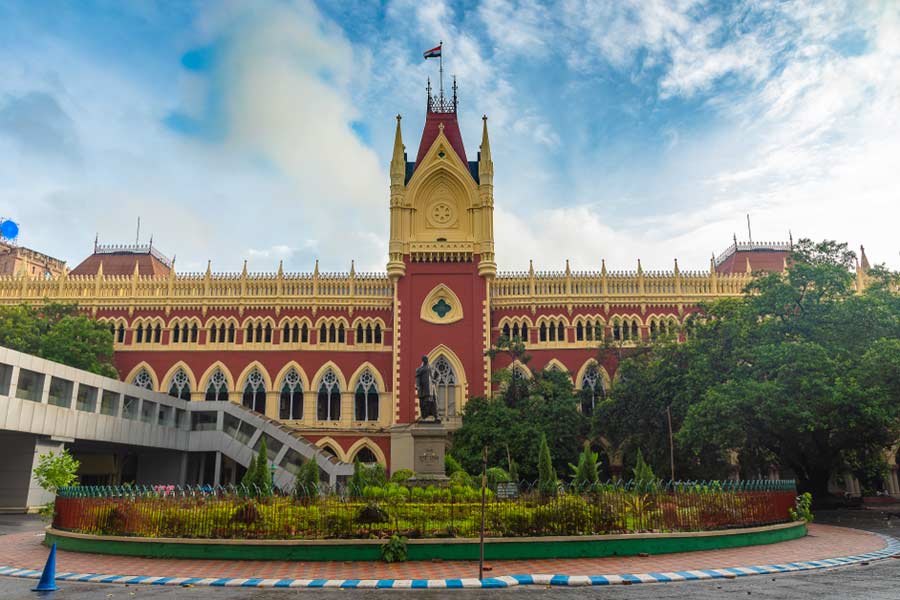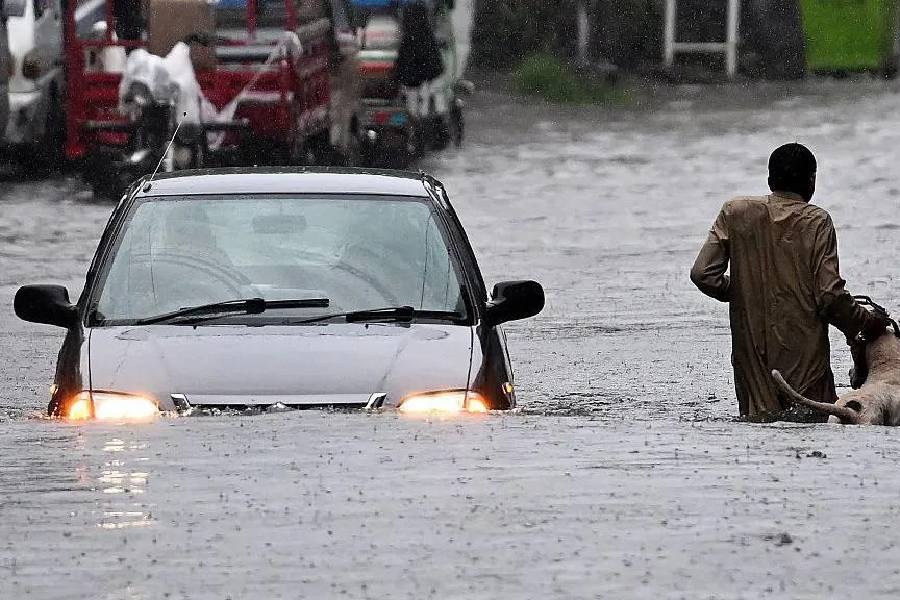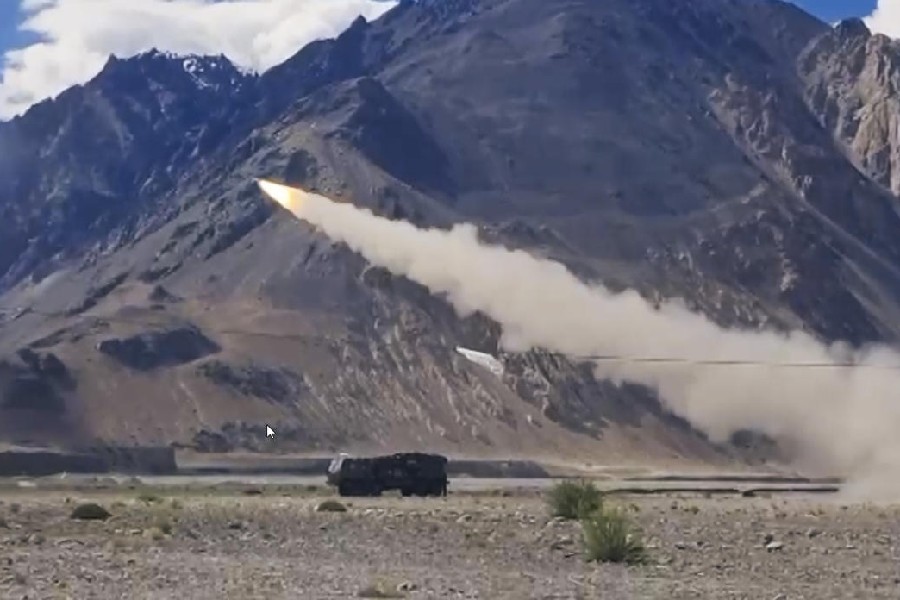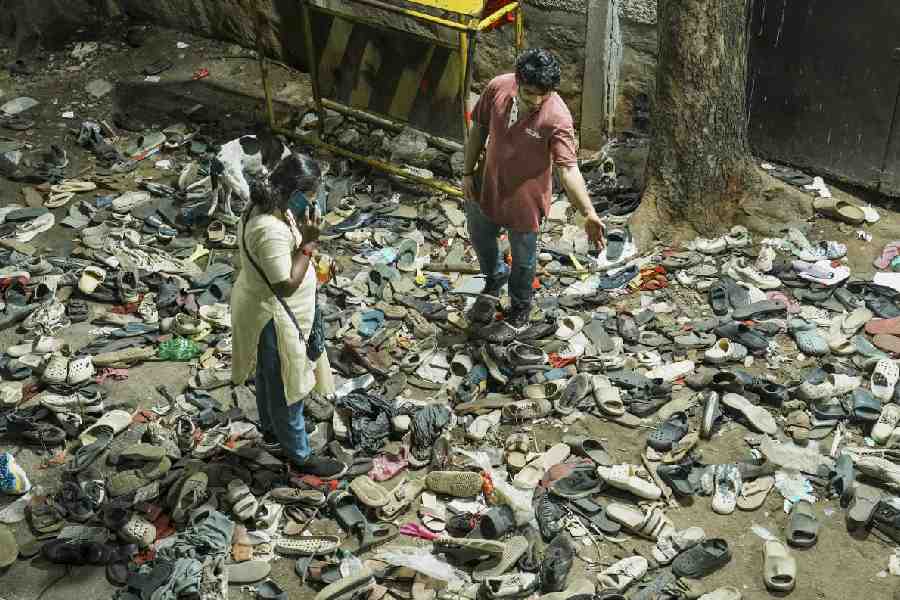 |
| Rosy Devi presents Geet Govindam during her classical solo performance at the Government Dance College in Imphal. Picture by Eastern Projections |
The indigenous dance forms of the region are an integral part of the social fabric and need to be preserved and encouraged
A multi-cultural mosaic and the melting pot of varied ethnic groups, Northeast is endowed with a wealth of traditional dance forms.
Manipuri dance, for instance, is resplendent with lyrical beauty and rhythm. These dance forms, whether folk, classical or modern, are largely devotional in nature. The Raslila, the epitome of Manipuri classical dance, based on the celestial and eternal love of Radha and Krishna and reveals the transcendental love of Krishna and Radha and the Gopies? devotion to the Lord. Nupa Pala, otherwise known as Kartal Cholom or cymbal dance, is characteristic of the Manipuri style of dance and music. The Thang-ta dance of Manipur was an evolution from the martial arts exercises encouraged by the kings and is performed by young men with swords and shields.
Like Manipur, traditional culture in Assam, too, is an amalgamation of folk and Vaishnavite culture. The Sattriya dance form of Assam has now established a niche in the classical dance scenario in India. Among the indigenous and ritual-based dance forms, Bagrumba and Kherai dance of the Bodos, Bayukh dance of the Rabhas, Hasa-Kekan of the Karbis, Gumrag of the Misings and Deodhani nritya are still prevalent in Assam. In the neighbouring state of Meghalaya, apart from lesser-known dances like Kased Sazir, Sed Larniwoh, Kased Rongkhla, the Nongkrem dance of the Khasis and Owqngla dance of the Garos are most popular.
Doregata and Pomelo, the two other most popular Garo dances are full of fun and frolic. The tribals of Tripura, belonging mainly to the Reang, Chakma, Halam and Usai communities, have a rich culture of their own. The customary dances among the Tripuris are the Hak-hak dance of Helem tribe, Hozagiri dance of Riyang tribe, Bizo dance of the Chakma tribe and Lebung Bumani dance. Apart from the popular Cheraw or bamboo dance, there are numerous traditional dances like Seilam, Sehlam, Khualam, Chirao, Parlam, Ralu-Ram, Jengtalam, Sarlam kai dances that are part of different religious and social ceremony and are integral part of the Mizo culture. In the neighbouring state of Nagaland, mostly war dances are prevalent.
Whereas the common culture of the tribals is still confined to the community itself, traditional customs and practices of the mainstream, such as the ways of performing pujas and religious rites, had spread across the region and even the country. The simple customs and practices of various tribes had so far retained their distinct traditional identity to a large extent. Amid diverse traditional practices of different tribes, the blending and mixing of different traditional customs and rituals augment the affinity among the different ethnic tribes.
There is urgent need to focus on the necessity of preserving such cultural identity, not in isolation but with inter-cultural relations and ritualistic contacts among the numerous tribes. It is particularly essential to understand the physical and cultural isolation of the hill tribes and explore the possibility of assimilating the culturally-alienated hill people of the region with the plains tribes through common rituals.
In the context of the region, the traditional customs, rituals of the indigenous tribes are identified with other aspects of their lifestyle. The realities of life are expressed in the symbolic structure of the dance forms. Art does not spring from the dance itself but from the totality of religious and social significance of the dance form functioning in the collective psychology. For this reason, the indigenous tribes of the Northeast view traditional practices as an inner knowledge, and a spiritual participation rather than the result of a critical or analytical attitude.
A critical question about the future and sustainability of these different folk and tribal rituals and traditional practices are their economic viability. As of now, these tribes are self-sustained but they may not continue to be so. The best people to speak about the means of survival and continuity of the practices are the practitioners and the connoisseurs themselves. While they can provide both the explicit and implicit understanding of the processes of evolution and the obstacles faced by these rich traditional practices, it is possible that they can also suggest ways of overcoming such obstacles. If not providing complete solutions, such observations may at least suggest ways of seeking such solutions.
The indigenous societies of the Northeast are passing through a process of transformation. However, since many of them so far remained in relative isolation, the nature of impact of the current changes is still minimum. One way of examining any sign of change could be to look at the manifestations on the cultural and ritualistic practices, which may serve as indicators of such changes in their socio-cultural and economic life. Lately it has been alleged that in the backdrop of the current unrest, money has become the all-pervasive language in many indigenous societies of the Northeast and it is having an adverse impact on different facets of their day-to-day life. If this is true, it is a looming threat that can spell doom for the very socio-cultural fabric of these societies. It is a phenomenon that needs to be addressed urgently.
Culture is an evolutionary process of human thought and emotions, regarded collectively. Cultural diversity and cultural convergence are but parts of this dialectical evolution. Cultural expressions, in all their local variations such as dances and traditional customs, are very useful tools for human development, particularly in the context of the Northeast, with various tribes currently striving to achieve socio-economic development of their masses in a short period of time. Therefore, such cultural expressions need to be identified, defined, and described properly, and the information documented and disseminated.
For the proper utilisation of local cultural expression in development, cultural statistics need to be streamlined and made comprehensive. Local cultural milieu and lesser-known cultural expressions are in dire need of such resource support and encouragement. Such support would also benefit the cause of encouraging and maintaining cultural diversity.
Micro-level study to focus on the economic aspects of the indigenous dance forms, as well as some near-extinct rituals of the Northeast and evolving a pattern about the survival trend of the threatened practices of the region would be a worthwhile research initiative. Whether monetary incentives for the practitioners and their successors can be pre-requisites for sustainability of some of these endangered indigenous dance practices is also worth exploring.











